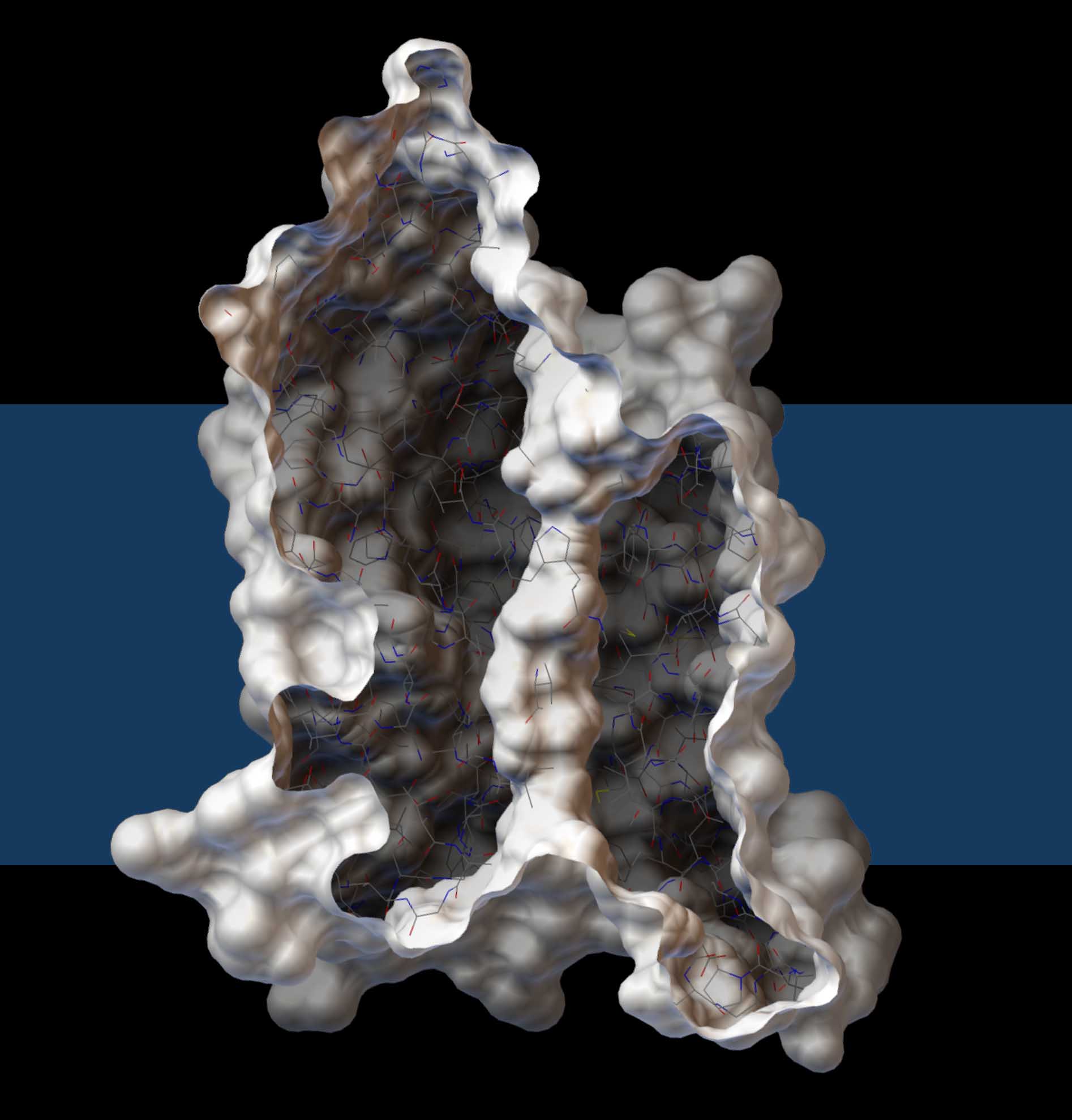

By Gopinathan K. Menon

Molecular illustration of an aquaporin channel embedded in a cell membrane.1,2
Scientists in the cosmetic field often have the unpleasant experience of having their scientific manuscripts rejected by 'elite' journals, or receiving a sub-standard rating in peer reviews due to the perception that their science is frivolous. Occasionally, elite journals publish some remarkable scientific breakthroughs, which in some cases are actually achieved with chemical entities that have been used as cosmetic actives throughout history, sometimes going back a few decades or even centuries. In the cosmetic science community we have known for many years that such ingredients exert a biological effect on skin, but never elucidated all the molecular biological pathways involved, replete with their alphabetic soup of jargons. These eureka moments are rare, so we should rejoice when they occur.
The biological activity and discovery of the aquaporins is one example of great breakthoughs and their relationship to cosmetic science. Aquaporins are proteins that form water channels (or pores) in cell membranes. This was a very hot topic after the Nobel prize in chemistry was awarded to Peter Agre and Roderick MacKinnon in 2003 for their elucidation of the structure and biological function of aquaporins. Soon after, the cosmetic industry developed products that impact aquaporins in skin. Not surprisingly, publications of their work appeared in non-elite journals targeted to their selected audience. On the other hand, Dr. Verkman and his colleagues from the University of California, San Francisco published a paper in an 'elite' journal on skin dysfunctions in aquaporin knock-out mice, and showed that topical application of glycerin alleviates the problems associated with aquaporin deficiency.3 Needless to say, many scientists in the personal care industry were not truly surprised or impressed by this revelation, but only mildly amused.
Now, let us take a close look at retinol and vitamin C. The rage of recent biological research has been microRNAs and epigenetics. Epigenetic memory, implicated in skin aging due to various environmental aggressors and stressors, involves methylation of DNA, resulting in the formation of 5-methylcytosine (5 mC). Of course, there are protective measures in the body, such as enzymes that can oxidize 5 mC and, thus, help remove the 'epigenetic memory'. The ten-eleven translocation (TET) enzymes perform this function, but what controls these enzymes, and whether the enzyme activity can be manipulated, have remained enigmatic. Very recently, a multi-author publication in the Proceedings of the National Academy of Sciences show that retinol increases the cellular content of TET proteins, while vitamin C increases their activity by reducing the levels of Fe3+ (resulting in coversion to Fe2+).4 The authors suggested that vitamin C and retinol—ingredients that are very familiar to cosmetic chemists—actually promote the derivation of induced pluripotent stem cells and help erase the epigenetic memory.
Ironically, I recall a poster that we presented in 2002 at the World Congress of Dermatology in Paris where we demonstrated that vitamin C and retinol provide remarkable synergy in the repair of epidermal photodamage.5 Unfortunately, we found it was nearly impossible to publish that work. Admittedly, at that point in time we knew nothing of TET or DNA methylation.
References
1. D.S. Goodsell, S. Dutta, C. Zardecki, M. Voigt, H.M. Berman, and S.K. Burley, The RCSB PDB "Molecule of the Month": Inspiring a Molecular View of Biology, PLoS Biol., 13(5): e1002140. doi: 10.1371/journal.pbio.1002140 (2015).
2. D. Fu, A. Libson, L.J. Miercke, C. Weitzman, P. Nollert, J. Krucinski, and R.M. Stroud, Structure of a glycerol-conducting channel and the basis for its selectivity, Science, 290, 481-486 (2000).
3. M. Hara, T. Ma, and A.S. Verkman, Selectively reduced glycerol in skin of aquaporin-3-deficient mice may account for impaired skin hydration, elasticity, and barrier recovery, J. Biol. Chem., 277, 46616-46621 (2002).
4. T.A. Hore, F. von Meyenn, M. Ravichandran, M. Bachman, G. Ficz, D. Oxley, F. Santos, S. Balasubramanian, T.P. Jurkowski, and W. Reik, Retinol and ascorbate drive erasure of epigenetic memory and enhance reprogramming to naïve pluripotency by complementary mechanisms, Proc. Natl. Acad. Sci. USA, 113, 12202-12207 (2016).
5. G.K. Menon and M. Duggan, Synergistic action of vitamin C and retinol in reversing epidermal photodamage, 20th World Congress of Dermatology, Paris, France, July 1-5, 2002.